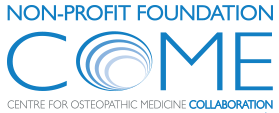Engaging with evidence-based practice in the osteopathy clinical learning environment: A mixed methods pilot study
| By Patrick van Dun | 0 Comments
Evidence-based medicine (EBM) requires that patient management decisions include deliberations on the best available evidence. However, engagement with EBM appears to be inconsistent. This pilot study used a mixed-methods approach to evaluate clinical educator and learner engagement with evidence in the clinical learning environment (CLE) through the SNAPPS-Plus clinical supervision model … ABSTRACT







